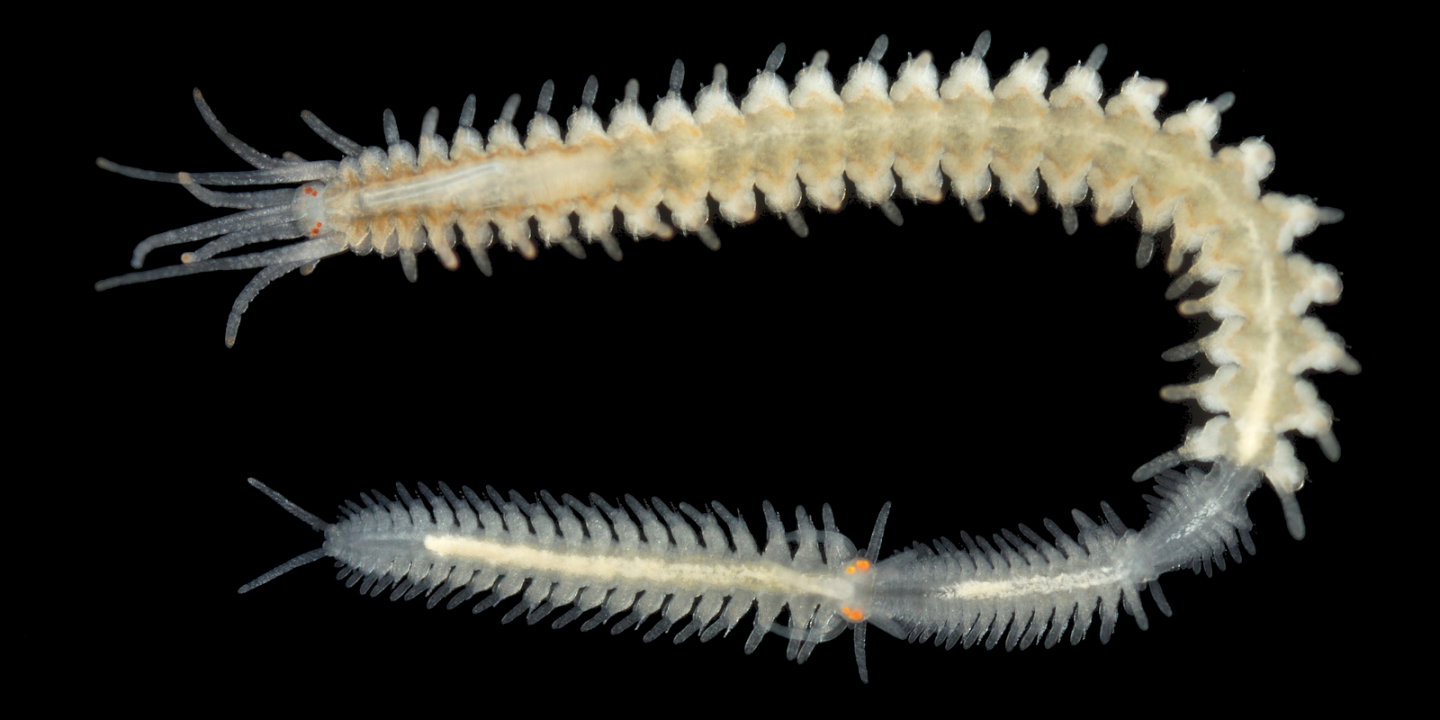On the blog this month, it’s time to for me to present another family of polychaetes. I will take a few steps away from my usual tentacles adorned critters to write about a peculiar group of worms, the family Syllidae. Syllids are a diverse family, with about 1100 species worldwide (Martin et al. 2021). They are generally small worms, ranging from a few millimeters to a few centimeters. They can be found crawling on pretty much anything in the ocean: rocks, shells, algae and even other animals. Their key feature is a barrel-like structure on the anterior part of the gut, called a proventricle, usually visible through their transparent skin.
So what is so special among them? Sure, they can be colourful and show off beautiful patterns. But that it is true of many polychaete groups (in my opinion at least!). No, the most impressive feature of syllids is their reproductive strategies. Reproductive modes in syllids can be divided into epigamy and schizogamy. Epigamy means that when the time has come for the animal to reproduce, its whole body will undergo several changes to enable it to swim to find a mate and spawn. These changes can include enlargement of eyes, changes in musculature and growth of swimming bristles. Schizogamy means that when the time has come for the animal to reproduce, it will produce several reproductive individuals that will swim in open waters in its place. These are called stolons and are like small clones of the main worm which purpose is to carry its gametes to mate. After mating, the stolons generally die, although in the subfamily Autolytinae the female stolons can watch over the mass of fertilized eggs, a behaviour called brooding (Nygren 1999, Ribeiro et al. 2018).
In some species, these stolons are produced one by one from the posterior end of the worm, where they stay attached until they are ready. This creates little chains of worms as the Myrianida edwarsii here:

References:
Martin D, Aguado MT, Fernández Álamo M-A, Britayev TA, Böggemann M, Capa M, Faulwetter S, Fukuda MV, Helm C, Petti MAV, et al. On the Diversity of Phyllodocida (Annelida: Errantia), with a Focus on Glyceridae, Goniadidae, Nephtyidae, Polynoidae, Sphaerodoridae, Syllidae, and the Holoplanktonic Families. Diversity. 2021; 13(3):131.
Nygren A. Phylogeny and reproduction in Syllidae (Polychaeta). Zoological Journal of the Linnean Society. 1999; 126: 365-386.
Ribeiro RP, Bleidorn C, Aguado MT. Regeneration mechanisms in Syllidae (Annelida). Regeneration. 2018; 5: 26–42.
![]()
